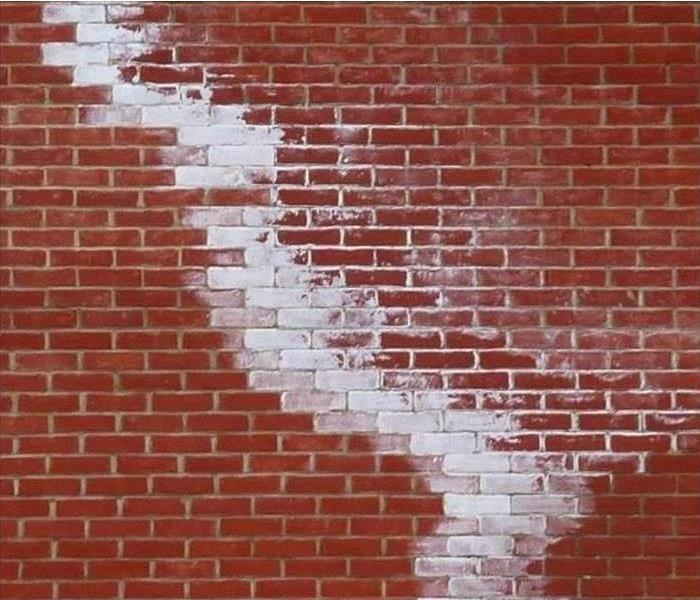Efflorescence or Mold? Do you know the difference?
8/23/2017 (Permalink)
 If you are uncertain as to whether you’re dealing with mold or efflorescence we suggest calling our office to schedule an inspection.
If you are uncertain as to whether you’re dealing with mold or efflorescence we suggest calling our office to schedule an inspection.
Efflorescence or Mold? Do you know the difference?
Efflorescence and mold can look quite similar. Although they look similar, that is the only quality they have in common. Distinguishing between the two is important for your piece of mind and treatment of the affected area.
What is Efflorescence?
Efflorescence is the migration of salt to the surface of a porous material, where it forms a white chalky coating. Efflorescence is found on masonry, stucco or concrete surfaces. It forms from salt deposits that remain on the surface of the materials when groundwater and sometimes rain water evaporate. Although it is unsightly, it does not pose a health risk. It does however indicate that there is excessive moisture entering and can be problematic if not addressed.
What is Mold?
Mold is a term used to refer to fungi that grow in the form of multicellular thread-like structures and comes in a rainbow of colors. Mold grows and spreads in unconditioned spaces and sometimes in structures that do not have proper ventilation or have experienced a leak. With the exception of the winter months mold is always present outdoors. Exposure to damp and moldy environments can cause a variety of health effects, or none at all.
How do you know the difference?
-Efflorescence dissolves in water, whereas mold does not.
-If rubbed between your fingers, efflorescence turns powdery. Mold does not
-Mold can be any color, but is often black or grey. Efflorescence, is almost always white or yellow.
-Efflorescence develops on inorganic building materials, like masonry, stucco or concrete. Mold typically grows on organic materials, such as wood or drywall.
If you are uncertain as to whether you’re dealing with mold or efflorescence we suggest calling our office to schedule an inspection. Once the problem of mold or efflorescence is distinguished we can provide you with an estimate for cleanup.






 24/7 Emergency Service
24/7 Emergency Service